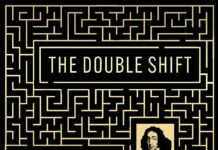
by Carolyn Betensky
This essay was peer-reviewed by the editorial board of b2o: an online journal.
In Fire in the Ashes: Twenty-Five Years Among the Poorest Children in America, Jonathan Kozol recounts a scene that took place repeatedly in New York in the mid-1980s: theatergoers exiting the Broadway musical Les Misérables kept being solicited for money by groups of children from a nearby homeless shelter that was notorious for its squalid conditions. The NYPD did their best to chase the children away, but eventually the theater owners and other businesses adopted more elaborate measures to keep the groups apart – including hiring other homeless people to “cleanse” the theater district (2012; 3-6).
Beyond its presentation of the theatergoers’ exquisitely ironic plight – they had just finished being moved by the trials of nineteenth-century Parisian street urchins when they were forced to contend with the demands of flesh-and-blood poor children — Kozol’s anecdote offers us an especially vivid tableau of contrasts: the rich (with money to spend on entertainment) and the poor (whose basic needs are not being met), the genteel and the unruly, the happy few and the miserable. In many respects, his tableau replicates the troping of social problems in nineteenth-century novels (including Hugo’s). Victorian readers would have been familiar with every element in it — from the high irony and the contrasts, to the presumed obliviousness of the well-heeled theatergoers, to the banding together of the business owners, to the calling in of the authorities. They would even have been familiar with its representation of art’s failure to elicit sympathy for the poor within a work that aimed, itself, to elicit such sympathy.
We produce, learn, adapt, repeat, and perpetuate ways not to have to think or to act consistently, from one context to the next. New York’s “stop and frisk policy,” which regularly subjected minorities to arbitrary humiliation and abuse in the name of public safety, was considered reasonable until very recently, not only by the Bloomberg mayoral administration but also by many white people who felt “safer” because of it. The Black Lives Matter movement has had to insist on the value of black lives, as opposed to “all” lives, because black lives have not registered as valuable, in the manner of “all” lives, to the white majority. When I taught at a large, private, urban university, all of the food court workers in the student union building and all of their student clientele were in their late teens and twenties; strikingly, and yet somehow invisibly, all of the food servers were black, and most of the students were white. Closer to home, most of the universities I know of, including my own, rely on the labor of adjunct professors whose names we never learn because they are not “really” our colleagues.
We are incredibly good at not knowing what we know, and so were the Victorians. The same culture that developed and embraced modes for representing inequality and injustice could be horribly blind to its own oppressive practices. The same Dickens who wrote humanitarian epics wrote deeply racist essays. The same narrator in Jane Eyre who famously makes common cause with slaves describes Bertha in stock racist terms. Elizabeth Gaskell undercuts her representation of the suffering working classes in Mary Barton with caveats about the “dumb and inarticulate” masses. There are many, many examples any of us here could cite of Victorian disjointedness – so many that we tend to expect them. “Blind spots” like these are so normal that they themselves have become easy to ignore.[i]
The book project I’m developing considers the active production and naturalization of such blind spots in Victorian texts. Unlike historicist analyses that contend that we cannot fault the Victorians for not knowing what we know, I am arguing explicitly that they did know – and did not know – what we both know and do not know. My purpose, however, is not to fault the Victorians but rather to understand the ways Victorian culture created pathways of non-cognition that enabled them, and us, NOT to have to bring contradictory ideas and feelings into conversation with each other.
Contemporary relational and interpersonal psychoanalysts see “the” self as a compendium of self-states – distinct ways of being, feeling, and understanding that are called up and activated within different sorts of contexts – as opposed to the unitary, essential, continuous “self” of the depth model.[ii] According to theorists such as the late Stephen Mitchell, Philip Bromberg, and Donnel Stern, who are themselves working in traditions established by Harry Stack Sullivan, W.R.D. Fairbairn, and Melanie Klein, dissociation is in some sense a normal state of affairs. Because different self-states kick in at different moments – depending on what we’re trying to avoid or accomplish, depending on who we’re with and the histories our interpersonal configurations evoke – “we” often don’t experience what “we” experience. Different self-states get excluded in a process that works much like what Sullivan (1953; 319) called “selective inattention”: “the classic means by which we do not profit from experience which falls within the areas of our particular handicap. We don’t have the experience from which we might profit – that is, although it occurs, we never notice what it must mean; in fact we never notice that a good deal of it has occurred at all.”
With some exceptions, the implications of these theories have not been considered beyond the clinic. Yet it seems to me that the concepts of the self-state and dissociation, understood as normative cultural mechanisms, have much to contribute to our understanding of texts and other cultural practices. The discontinuity of self-states offers us a way to comprehend the disconnects within texts without explaining them away: incompatibilities, disconnects, and blind spots may be seen less as contradictions (sutured or not) than as the adaptation of culturally sanctioned ways of not thinking things together. The blind spots, disconnects, and disjointed thinking we see so clearly in Victorian texts are heritage behaviors that are passed down, pre-approved and systematically naturalized; they are cultural patterns that endorse and enshrine gaps between discordant ways of thinking and thereby keep them from contaminating or challenging each other.
The therapeutic goal of clinicians working with dissociation is to get the patient to “stand in the spaces,” as Bromberg (1998; 274) puts it – to become capable of acknowledging and tolerating these dissonant selves.[iii] The aim of these clinicians is not to “unify” the selves in some way, in other words; rather, it is to help the patient to bring the conflicting demands and expectations of the different selves to the fore. More than standing in the spaces between discordant self-states in Victorian novels, my own goal in this project is to note the cultural production of the spaces themselves. At this early stage, I anticipate writing a metacritical chapter, a chapter on the contributions of form and genre to cultural practices of dissociation, and a chapter on the implications of dissociated self-states for the notion that literature can change “the” reader.
Obviously, this project is unapologetically presentist, as any attempt to differentiate Victorians’ not knowing from our knowing (as in, “the Victorians didn’t think about racism/anti-Semitism/classism/sexism, etc. the way we do now”) serves to help us lie about our own cultural moment in the manner of Michel Foucault’s (1990; 6) “speaker’s benefit.”[iv] Treating the Victorians as other in this regard suggests that we have achieved mastery over familiar kinds of injustice, a manifestly specious notion. And further, when twenty-first century scholars insist on a constitutive difference between Victorians’ uninformed or undeveloped sensibilities and our own, we lose track of the cumulative development of a technology that assists us in not knowing what we know. I would add that the regularity and unguardedness of nineteenth-century inscriptions of racism, misogyny, contempt for the poor, etc. offer twenty-first-century educators abundant opportunities to discuss less visible (to us) dissociative cultural logics in our own midst – if we dare to treat Victorian literature as an occasion for encouraging our students to think critically about their own world.
References
Bromberg, Phillip M. 1998. Standing in the Spaces: Essays on Clinical Process, Trauma, and Dissociation. Hillsdale, NJ: Analytic Press.
Foucault, Michel. 1990. The History of Sexuality. Volume 1: An Introduction. Translated by Robert Hurley. New York: Vintage. Foucault, Michel.
Hacking, Ian. 1995. Rewriting the Soul: Multiple Personality and the Sciences of Memory. Princeton: Princeton University Press.
Kozol, Jonathan. 2012. Fire in the Ashes: Twenty-Five Years Among the Poorest Children in America. New York: Broadway Books.
Sullivan, Harry Stack. 1953. The Interpersonal Theory of Psychiatry. New York: W.W. Norton.
Notes
[i] Critics have paid abundant attention to these discrepancies – sometimes arguing that they are not in fact discrepancies if considered in historical context, sometimes arguing that what appear to be discrepancies are continuities, etc., etc. I can’t attend to this point in any detail here but want to acknowledge that apparent contradictions such as these are far from new objects of critical analysis.
[ii] Ironically, nineteenth-century psychologists such as Pierre Janet and William James had developed discontinuous conceptions of the self that, respectively, preceded and rivaled Freud’s depth model. See Hacking 1995 for a historical account of the rise, fall, and resurgence of psychiatric theories of multiplicity. I’m hoping this study will provide another perspective on the consuming interest in dissociation and dissociative phenomena among nineteenth-century writers more generally.
[iii] “‘Standing in the spaces’ is a shorthand way of describing a person’s relative capacity to make room at any given moment for subjective reality that is not readily containable by the self he experiences as ‘me’ at that moment.’” Bromberg (1998; 274).
[iv] Foucault writes of the self-serving tendency of post-Victorians/post-Freudians to call out the Victorians for being “repressed,” thereby establishing themselves as “liberated” (1990; 6).
CONTRIBUTOR’S NOTE
Carolyn Betensky is Associate Professor of English at the University of Rhode Island. She is the author of Feeling for the Poor: Bourgeois Compassion, Social Action, and the Victorian Novel (Virginia UP, 2010), and the co-author and translator of Eugène Sue’s 1843 blockbuster Les Mystères de Paris (Penguin, 2015).



